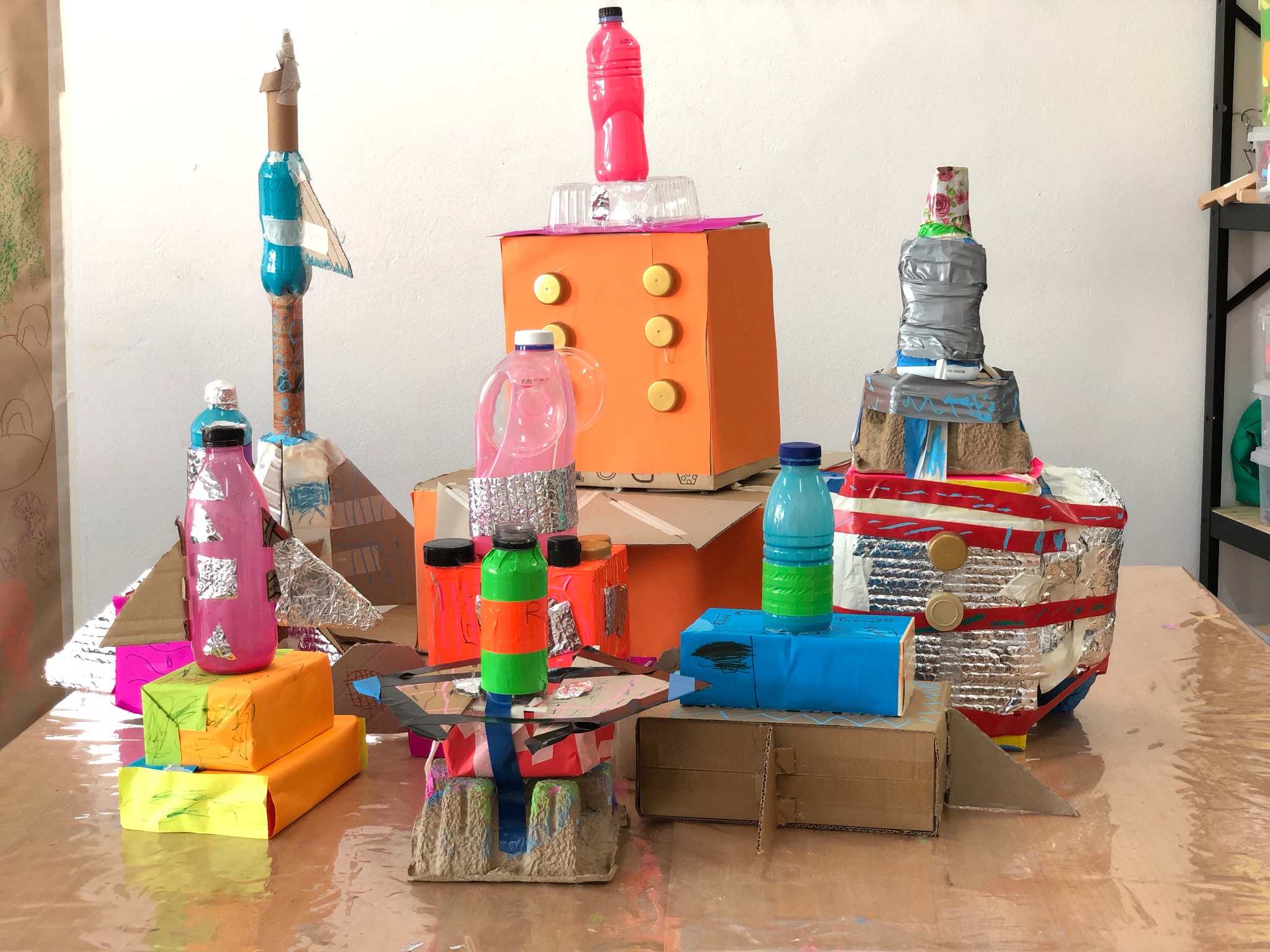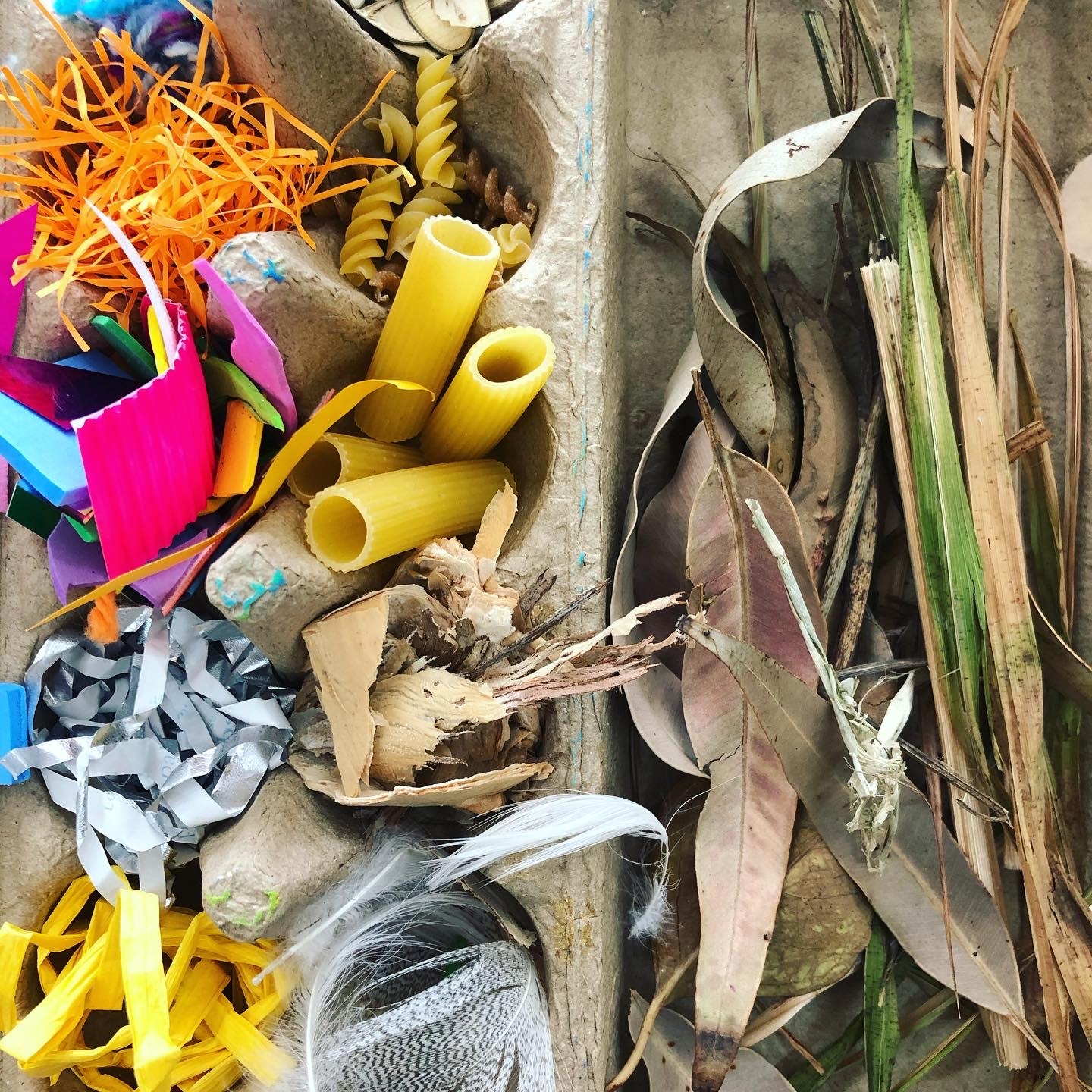August 2021
Creativity is all the rage, but how do you actually encourage your children to become creative thinkers? Where does creativity come from? Over the years parents have asked me many times how to support their child 's development in this area. Here are my 10 top tips for encouraging creativity in kids - I could actually keep adding to this list all day. As the saying goes: "creativity never runs out!"
10 Top Tips to Encourage Creativity in Children
1. Take them outside to wonder at the magic of the natural world: collect leaves and make rubbings, make a nature mandala, build a construction from sticks, make a pebble balancing tower, draw in the sand, make a sandcastle, press some dried flowers in a book, collect insect shells and draw them, make paint out of crushed rocks & water, make nature crowns.
2. Present them with exciting new, messy or unusual art materials: paint with shaving foam on the bathroom tiles, make a tape "drawing" on the floor or wall, use "loose parts" to make manadalas or build towers, make a "cardboard playground" from leftover boxes, make paint from colourful foods such as red cabbage, cumin & spirulina, play with vinegar, baking soda & watercolours, make costumes out of big paper bags (pictured).

3. Don't just recycle, ask - what can we make from this? We love, love, love making art works from recyclables at Little Ginger Studio! Got a plastic bottle, some boxes and some tape? Build yourself a rocket! (pictured) Recyclables lend themselves to all sorts of making: Old socks become sock puppets, turn takeaway containers into turtles, cardboard rolls into fish, make cardboard box robots etc.
4. Show them what other artists have created - visit a gallery, read an art book, look at other children's art online, visit your local library, visit a book shop, collect picture books of your favourite illustrators. We often use children's literature as inspiration for our programs at the studio and I love collecting quality picture books for this reason. It's a cheap way to get an art fix!

5. Collect interesting objects to use as stimuli - leaves, feathers, shells, interesting stones, bottle tops, gumnuts, seedpods, ribbons, buttons, driftwood, coins, flowers, paperbark, pinecones etc - anything can spark a child's imagination and act as a drawing or art-making prompt.
6. Give them the skills step by step BUT then set them free to innovate! At our art studio we love to teach kids the technical skills around how to use different art materials, but more importantly, we love to then let them find their own creative paths.

7. Provide a safe but stimulating place to create! Set up a corner in your home where your child is allowed to create. It doesn't have to be fancy - a small desk and chair with some basic art materials, recyclables and perhaps a pinboard for display purposes will do. Provide papers, markers, coloured pencils, glue stick, PVA, scissors, crafts & recyclable materials such as: cardboard rolls, bottle tops, pipecleaners, feathers, pom-poms, sequins, scraps of material, yarn etc. Don't forget a table cloth to keep your table clean and don't worry, your child will know what to do. (kids really are innately creative, give them materials and they will "make")
8. Emphasis that there is no wrong or right way to create: celebrate your child's creative output and stear clear of pre-conceived ideas of "good" art. Over-emphasis on creating "realistic" drawings is a negative influence on children's creativity. As I like to say to my students: "You're not a camera. We're not taking a photo, but expressing ourselves!"

9. Celebrate individuality - we might start at the same place, but our art is all different. Everyone's work is different. Everyone's work is valuable.
10. Encourage and applaud your child's problem solving skills: build a structure out of sticks, make home-made toys - pom-pom launchers, balloon-powered cars, flying machines, build a marble run, a popstick bridge for toy cars, make a paper costume, a hat, cardboard shoes, do some tie-dying, make paper. Problem-solving skills are art-making skills: How will my structure balance? How will it move? How do I attach two materials together? How do I mould this material to get a result?
Why encourage creativity? My very favourite unattributed quote is that "Art-making makes children powerful." It really does show them that they are capable beings. Creativity is very much the spark that drives innovation, is a way of finding solutions to complex problems and most importantly, it's fun!


